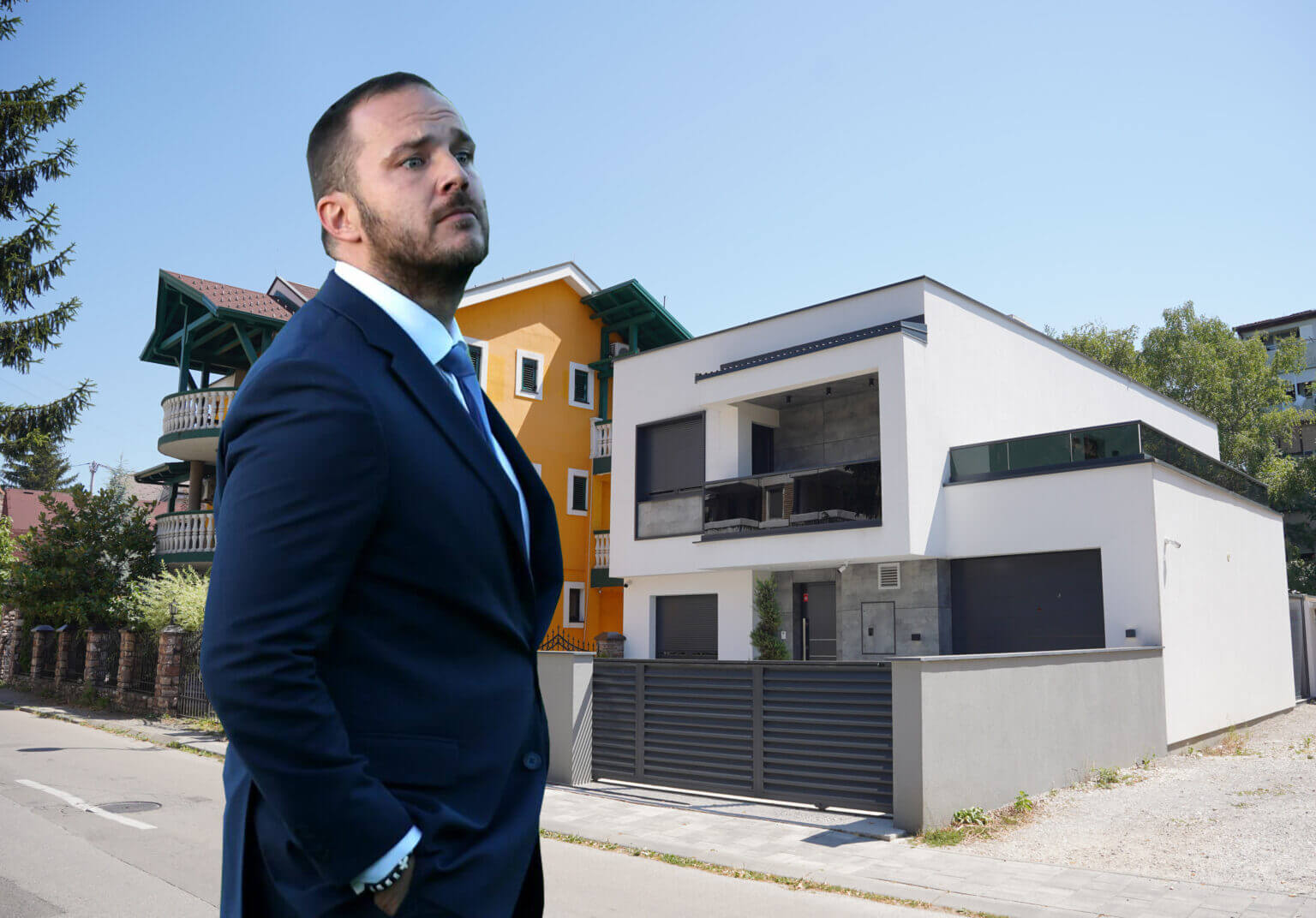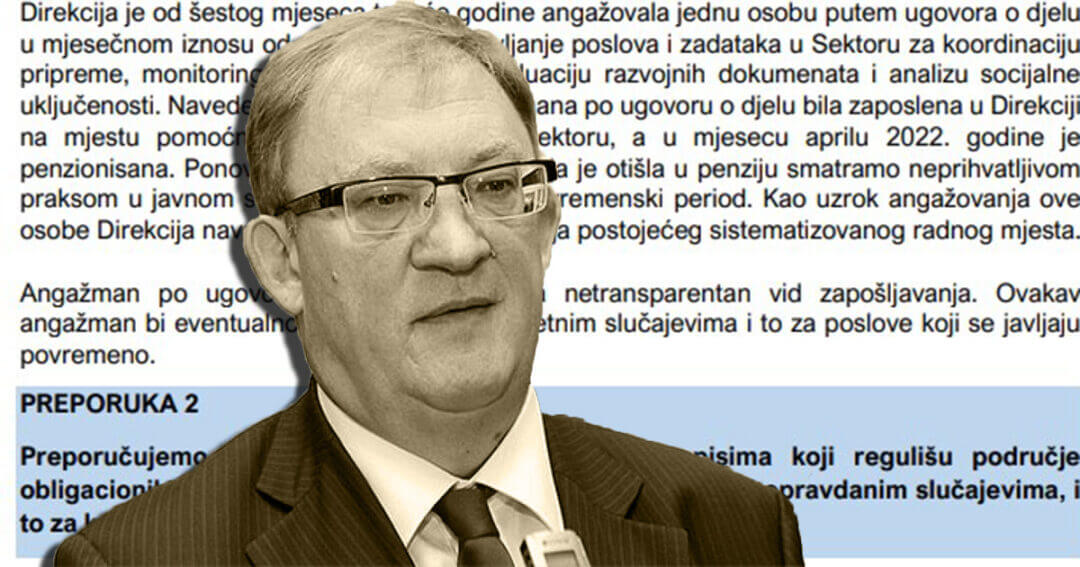Foto: Dejan Rakita/PIXSELL
The reconstruction of the lawn at the “Asim Ferhatović Hase” stadium, which has been surrounded by a series of controversies from the beginning, will be taken as the modus operandi of the whole process. The completion of the works is still uncertain, and the technical acceptance of the field is particularly questionable due to issues with its levelling, hardness, as well as water permeability and drainage. According to Valter’s information, the cost of materials for the load-bearing layer is around 30 KM. At the same time, the quartz layer that was used on the stadium in Banja Luka is significantly more expensive, with its cubic meter costing more than 150 KM.
Vico Zeljković, the current president of the Football Federation of Bosnia and Herzegovina and nephew of Milorad Dodik, has caused significant damage to the reputation of the BiH national team and its image in the international and sports community. Despite being just 34 years old, he has amassed immense wealth in real estate.
From what is known so far, in Bosnia and Herzegovina, as well as in Croatia, he registered a company several years ago under the classification of “buying and selling own real estate”.
Zeljković’s company, with the significant name “Vinina-Mia” (named after one of his daughters, Mia), is registered in the Commercial Court of Zagreb, with an active transactional account in the OTP Bank. The company’s headquarters is located at Kvintička 5 Street in Zagreb, and interestingly, the firm has reported no income over the past few years.
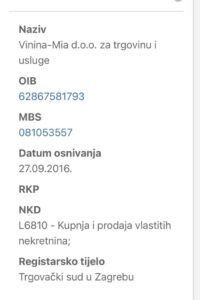

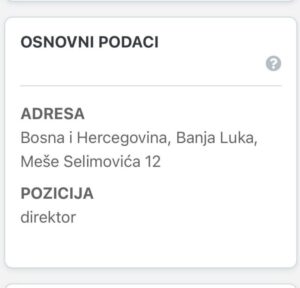
Photo: Zeljković registered a real estate trading company in Zagreb in 2016.According to unconfirmed information from multiple independent sources, in recent years, Zeljković has entered the business of buying real estate (apartments) in luxurious resorts in Croatia.
For the registration of the Vinina-Mia company, the president of the Football Federation of Bosnia and Herzegovina provided a Banja Luka address at Meše Selimovića Street 12. Although he was born in Bosanska Gradiška, as confirmed by several locals in Banja Luka, this is the address of his parent’s residence.
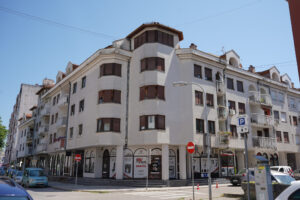
But very close, almost in the neighbouring street (Kralja Nikole), is indeed Zeljković’s actual residence. At that location, he has built a modern villa with serious video surveillance, as befits young businessmen.
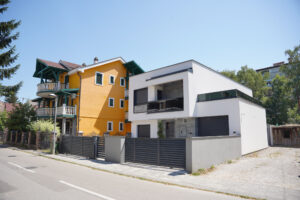
And that’s not all. Locals we’ve spoken to claim that Zeljković is also the owner of a weekend cottage in Krupa on Vrbas. In fact, the number of properties he has bought or built in recent years is unknown.
PROPERTY NUMBERS RISE, STADIUMS DECAY
While his real estate business flourishes, Zeljković, as the responsible figure and top-ranking official, is accountable for numerous issues that follow the reconstruction of football pitches in Bosnia and Herzegovina due to poor quality and corrupt practices. The technical acceptance of certain pitches, such as the one at Asim Ferhatović Hase Stadium (Koševo in Sarajevo), where FK Sarajevo plays domestic and international matches, has not been completed yet.
Our portal possesses extensive documentation that confirms this.
As a reminder, at the end of 2021, the European football governing body UEFA approved a project for the reconstruction of 12 main pitches at stadiums of clubs in the Premier League of Bosnia and Herzegovina. This project was considered one of the most significant activities for the development of Bosnian football since the establishment of the Federation. The plan aimed to equip clubs in Sarajevo, Banja Luka, Mostar, Tuzla, and other cities with state-of-the-art hybrid pitches. The project was primarily financed by UEFA funds, with clubs and local communities participating to a lesser extent.
However, the works on the pitches were delayed and completed only partially and interestingly, only one stadium was fully finished – the City Stadium in Banja Luka, where FK Borac plays, and which holds an emotional and business connection for Zeljković as a former president of the club. Other clubs whose pitches were reconstructed suffered losses as they had to play their home matches in other stadiums (for instance, FK Sarajevo played its matches as the host in Zenica).
The completion of works at Asim Ferhatović Hase Stadium was expected in the early spring of the previous year when the postponed city derby between Sarajevo and Željezničar was supposed to take place on this pitch.
Of course, this derby was postponed again and played on May 12, 2023, on a pitch that still hadn’t been technically accepted.
It’s worth noting that our Federation rejected the offer from Sis Pitches, the company that constructed seven out of eight pitches at the stadiums during the held FIFA World Cup in Qatar, and six out of eight pitches for the needs of the World Cup in Russia. Interestingly, SIS Pitches set a record for laying the pitch at Khalifa Stadium – which they achieved in just 13 and a half hours. As a reason for rejecting their offer, the Federation cited doubts about the announced completion deadlines.
The reconstruction of the pitch at Asim Ferhatović Hase Stadium will be taken as the modus operandi of the entire process, but from the beginning, this activity has been accompanied by a series of controversies. At this moment, the completion of the works is still uncertain because stitching the field due to problematic and disputed load-bearing layers cannot be finished within the planned deadlines. The technical acceptance of the pitch remains in question as well because, according to experts we have contacted, its levelling, hardness, water permeability, and drainage are contentious issues.
THE ROLE OF SRĐAN MANDIĆ
According to Valter’s findings, the material for the load-bearing layer was transported from Tuzla, and its cost is around 30 KM. At the same time, the quartz layer used on the stadium in Banja Luka is considerably more expensive, with its cubic meter costing over 150 KM.
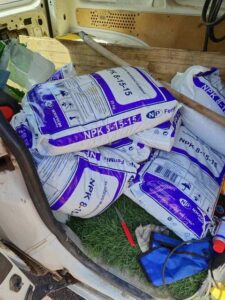
After justifiable doubts were raised about the quality of the material from Tuzla by employees of the Sports and Recreation Center (CSR) of the Municipality of Centar Sarajevo, who manage the stadium, an analysis of the disputed material was requested from the Federal Institute of Agropedology. The results of this analysis are, to say the least, concerning.
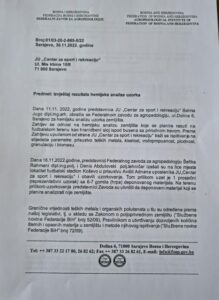
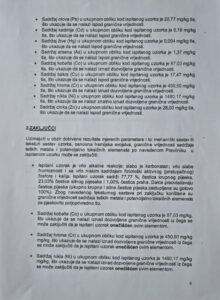
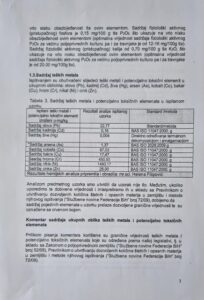
What is particularly suspicious in the whole story is the fact that the Municipality of Centar kept the analysis results hidden from the councillors and the public for three months, ignoring constant questions, initiatives, and resolutions from the representative body of the local community. According to a document in possession of our portal, the Football Federation of Bosnia and Herzegovina unsurprisingly denies this analysis, stating that they did not request it and criticizing the CSR for using the term “hybrid”, which they claim “leads to a wrong premise”.
Interestingly, amid all the turmoil and exceptional problems with the pitch at Koševo Stadium (as well as many others), Zeljković is a frequent guest of Chief Mandić, and not once has he mentioned any of the evident problems that have continuously followed this activity.
To add entirely new connotations to the whole story, Valter learns that a letter of intent was recently distributed between Mandić and Zeljković, indicating that the national stadium (where the national team of BiH would play matches) would be built at Koševo, rather than the location in the Sarajevo municipality of Novi Grad, as was previously communicated to the public.
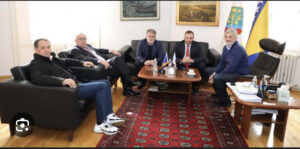
If this actually happens, the Asim Ferhatović Hase Stadium would lose its Olympic status due to the removal of the athletic track, while FK Sarajevo would be left without its home ground, which would be a significant blow to the club, its fans, and the entire Bosnian-Herzegovinian football community.
As for the pitch itself, the deadlines for the construction works have been exceeded by over six months, and it is uncertain when they will be officially and technically completed. In the meantime, mushrooms have started to grow on the Koševo “pitch”.
A company from the Netherlands made several attempts to stitch the laid turf, but they failed as they broke several parts of the machines used for the task.
The Greek company that installed the grass on the field selected the company Novoprom from Modriča to provide the so-called fertilizer for the grass. One bag of fertilizer costs 50 KM and covers 25 m², requiring 200 bags of fertilizer per month for an area of 5,000 m², which amounts to more than 10,000 KM monthly, and over 120,000 KM annually for these purposes alone.
The main contractor for the installation of hybrid pitches on Bosnian stadiums is the Serbian company Vick Group, owned by someone named Saparavalo, working in a consortium with the Greek company Hellasod and the Dutch company Tarkett.
A branch of this Serbian company was opened in Bijeljina specifically for maintaining pitches in Tuzla and Banja Luka. Žarko Rosić was also supposed to be involved in the whole project, as his company was meant to install heaters for these pitches, but due to irregularities in the entire process, he personally protested and refused to work under such conditions, threatening to go public with the issue. However, for unknown reasons, he did not follow through with that.
THREE MONTHS OF HIDING THE ANALYSIS
Despite sending questions related to these issues to the mayor of the Municipality of Centar, Srđan Mandić, in accordance with the Law on Access to Information, we did not receive any responses, which is consistent with Mandić’s practice and his usual dismissive attitude towards investigative media (even during Nedžad Ajnadžić’s time in the Municipality of Centar, they would respond to questions).
FK Sarajevo also did not respond to our questions.
Interestingly, even Mayor Mandić himself kept the results of the analysis from the Institute of Agroecology hidden from the Municipal Council for three whole months.
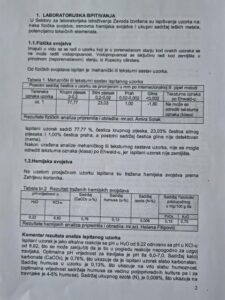
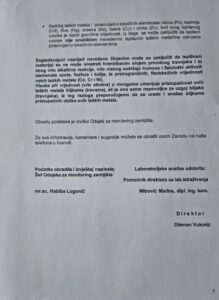
For our portal, the Chairman of the Municipal Council of Centar, Sejad Đozo, stated that the council members learned about everything from the media and that the Public Institution Center for Sports and Recreation (CSR) requested and received an analysis of the load-bearing and nutrient layer of the substrate at the Olympic football stadium Asim Ferhatović Hase from the Federal Institute of Agropedology.
“At the December session of the Municipal Council, I requested, through an initiative, that the analysis be officially submitted to us. I also asked the council members to express their views on this initiative, and it received unanimous support from all present council members. Since we did not receive the analysis, I asked for the same again at the January session of the Municipal Council, and I questioned why the mayor, the competent department, and the CSR are not providing us with the analysis, emphasizing that the Council is the owner of the stadium and, as such, manages the municipal property. But despite that, we did not receive a response. We asked the same questions at the February session because, by that time, we still had not officially received the analysis from the mentioned Institute”, Đozo said for Valter.
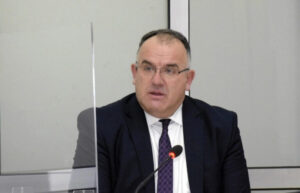
Only in March of this year did the Council finally receive the results of the analysis, and at the session, they requested the formation of a municipal commission to investigate all the circumstances and issues related to this project. The commission was formed, but it happened after almost all the works were completed. The work of this commission is still ongoing.
Valter possesses documentation, the latest report of this commission, which confirms all our claims and information. The commission, chaired by Velija Katice, suggests that the Municipality of Centar should stop investing in the reconstruction of the pitch until all the circumstances under which the contract was signed for the amount of 2,478,405 KM are clarified.
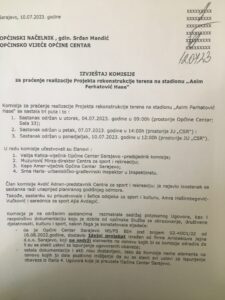
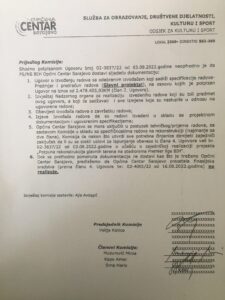
“Since our sessions are always held at the end of the month, as I mentioned, it means that we waited for a full three months to receive the requested analysis officially, even though we asked and raised questions related to all the issues regarding the project of laying turf on the stadium at three sessions. We didn’t receive answers to most of the questions, even though the Municipality participated with over 500,000 KM in the implementation of this project”, Đozo emphasizes for our portal.
Former leader of the “Horde zla” (Sarajevo’s fans) Amir Puzić Džine states for Valter that the fans are outraged due to the disinterest of relevant institutions that turn a blind eye to obvious criminal actions.
“The Olympic Stadium is deteriorating, and everyone remains silent. Nobody cares”, he concludes.
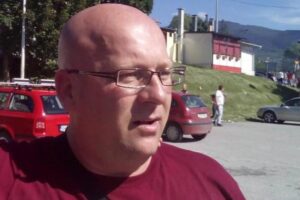
Just a few days ago, a new meeting was held between Mandić and Zeljković – in Mandić’s office. The topic was the “national stadium”.
Neither Mayor Mandić nor Zeljković wanted to comment on this, and neither did the Football Federation of Bosnia and Herzegovina (FFBH).
We sent emails with questions to both Mandić and the Football Federation, as well as Zeljković (regarding real estate purchases), but none of them were willing to respond.
It is well known that the Football Federation of Bosnia and Herzegovina, since its formation, has been a treasury of corrupt leaders who comfortably enjoyed their positions with the help of political connections. Our portal’s editor (Almedin Šišić) wrote a series of articles about corruption in the FFBH over 15 years ago, during the time when it was led by Ahmet Pašalić (as the director) and Munib Ušanović (secretary), with Miodrag Kureš as the chief treasurer.
After the series of articles and presented evidence, the Prosecutor’s Office of Bosnia and Herzegovina raised an indictment. Ušanović and Kureš were prosecuted and sentenced to prison, while Pašalić managed to escape prosecution.
Today, due to the alliance between politics and the judiciary, it is difficult to imagine that something similar could happen, especially without significant public support.
As a starting point, it is essential to request independent control and oversight of the completed works through the appropriate UEFA bodies to identify all the deficiencies and anomalies that accompanied the installation of the hybrid pitch at the Asim Ferhatović Hase Stadium (as well as other stadiums, excluding Borac’s).
As for the UEFA management structure, we should not expect any reaction, as they recently rewarded Vico Zeljković, the president of the Football Federation, with a prestigious position, despite being instructed by Dodik to undermine football in his own country while flourishing in real estate businesses.
(Valter portal)



